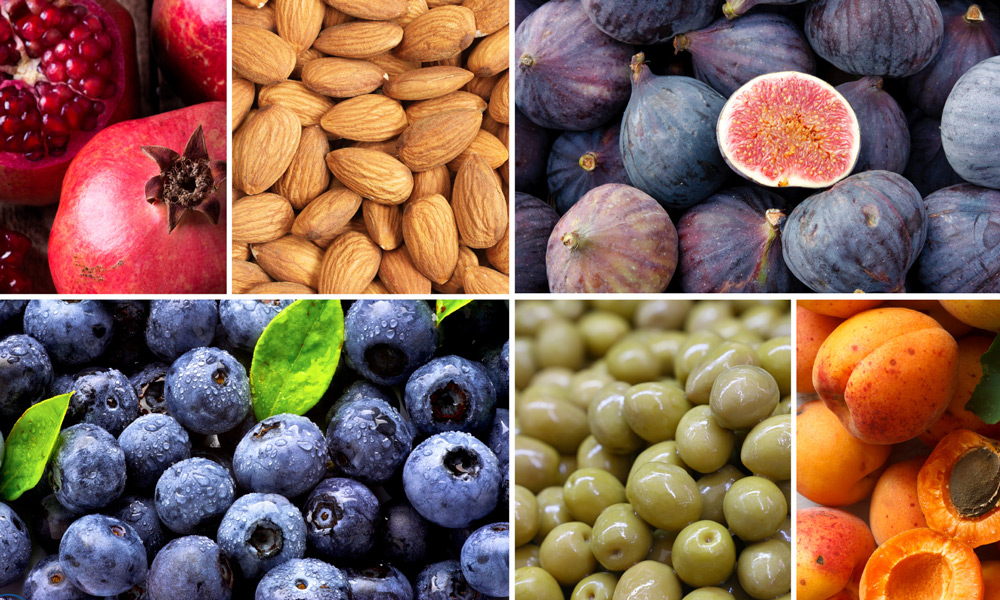Tu B’Shevat: New Year for the Trees
The epigram, “They tried to kill us. We survived. Let’s eat!” sometimes serves as a tongue-in-cheek synopsis of Jewish holidays: Passover, for example, recounts the original Jewish survival story in an extended banquet punctuated by four cups of wine. Similarly, Purim combines the story of Esther and Mordechai’s victory over the evil designs of Haman with lots of festive eating and drinking.
Tu B’Shevat is different. Unlike Passover and Purim, it’s not rooted in a biblical narrative, and there’s no survival theme. Instead, it marks a day in the calendar, Tu B’Shevat, literally the 15th of the month of Shevat. In the Talmud, the day is called Rosh Hashanah Ha’Ilan, or New Year for the Tree, and marks the beginning of the agricultural cycle for trees as well as a deadline for Israelites to calculate the year’s tithes (or offerings) of fruit they were required to bring to the Temple in Jerusalem. With the fall of the Temple and the end of tithing, the date lost much of its importance, but the holiday remained on the Jewish calendar.
Tu B’Shevat found a second life some thousand years later with a new ritual: a seder. Conceived by the Kabbalists of 16th-century Safed, the Tu B’Shevat seder was viewed as a tikkun (repair) to bring human beings closer to spiritual perfection. The seder is structured around four cups of wine and has a prescribed order to the meal, which consists of fruits and nuts found in the Land of Israel. It’s interspersed with readings and kavanot (spiritual meditations) from biblical, rabbinic and Kabbalistic texts that are designed to draw symbolic parallels between the gift of the physical fruits of trees and the gift of the spiritual Tree of Life—the Kabbalists’ mystical conceptualization of the presence of God in the world.
Described in a 50-page pamphlet published in Venice in 1728 and entitled “Pri Etz Hadar” (“The Fruit of the Beautiful Tree”), the seder foods symbolize God’s creations in ascending order, from the material to the spiritual plane. The first fruits and nuts to be served have inedible shells, such as pomegranates or almonds, and represent the physical world in which protection and defenses are necessary. Fruits with inedible cores—such as apricots or olives—follow, to recall both physicality and inner emotions that need protection. The third group are fully edible fruits such as figs or blueberries. They stand for the highest level of physical and spiritual perfection achievable in the corporeal world. The final “fruit” is not physical and cannot be eaten: It represents pure spirit and holiness that we can sense but not see.
The four cups of wine are equally symbolic: The first is white—pure, like the beginning of creation. In the second, a few drops of red wine added to the white remaining in the cup symbolize the stirrings of growth and creativity. The third cup of wine is a rosier blend expressing earthly abundance. And the last cup, which stands for the highest level of creation, is deep red with only a drop of white.

Unlike many 16th-century Kabbalistic ceremonies, the Tu B’Shevat seder survives. Among Sephardi Jews, especially in Mediterranean countries, “Las Frutus,” the holiday of the fruit, gained special prominence with elaborate meals featuring the seven species of food associated in the Torah with the Land of Israel: wheat, barley, grapes, figs, pomegranates, olives and dates. It also became customary to eat as many different types of fruit as possible—12 at minimum.
The Tu B’Shevat seder did not catch on among Ashkenazi Jews, partly because of its association with Shabbatai Tzvi, the 17th-century false messiah. Jews in Central and Western Europe also paid less attention because the harsh winter weather around the time of the holiday—which falls in January or February—made fruit hard to come by. Ashkenazi Jews, however, developed the custom of eating 15 different kinds of fruit, especially those grown in the Land of Israel, such as the hardy carob, to mark the holiday. When they resettled Palestine in the 19th and 20th centuries, they revived Chag Ha’Ilanot—Festival of the Trees—as a celebration of the reforestation and rejuvenation of the land, with kindergarteners singing songs and planting trees.
Today, the Tu B’Shevat seder connects Jews in many countries not only with their heritage, but also with the earth. American Jews use the Tu B’Shevat seder to champion environmental causes and diets based on locally sourced, organic and vegetarian foods. For several years, Urban Adamah, a farm-camp-community based in Berkeley, California, has hosted sold-out adults-only seders featuring “farm-crafted liquors and libations,” as well as a six-course menu made with kosher, local and seasonal ingredients. Hazon, a group promoting “Jewishly inspired sustainable communities,” published a Tu B’Shevat Haggadah in 2006. And with do-it-yourself resources available online, anyone interested in combining Jewish tradition with sustainability can now host a Tu B’Shevat feast of their very own.
Back to the Moment’s Tu B’Shevat Resource Guide
Tu B’Shevat Recipe
Israeli Wine and Fruit Soup
Recipe adapted from Gil Marks 6 to 8 servings
4 cups dry red or rosé wine
(or 2½ cups fruity dry white or rosé wine and 1½ cups dry red wine)
40 ounces frozen raspberries or cherries
44 ounces canned mandarin oranges
1½ cups orange juice or water
½ cup lemon juice
6 tablespoons quick-cooking tapioca
2 (3-inch) sticks cinnamon (optional)
If you prefer whole fruit, add the oranges to cooled soup.
Recipe
1. Bring all ingredients to a gentle boil, stirring occasionally.
2. Lower heat and simmer for 10 minutes.
3. Serve warm or chilled.
Variation: To thicken soup, omit the tapioca and dissolve 2 tablespoons cornstarch in ½ cup water; stir into boiling soup; and cook over medium-low heat, stirring constantly, until clear.



One thought on “Talk of the Table | A Tu B’Shevat Seder for Mystics”
Eating the 7 species mentioned in Deuteronomy is a new custom of about the last 20 yrs. Prior to that, not all 7 were available at this time of the year, specifically pomegranates or pomegranate juice. The juice is now easily available in most grocery stores, but this is a relatively recent phenomenon.